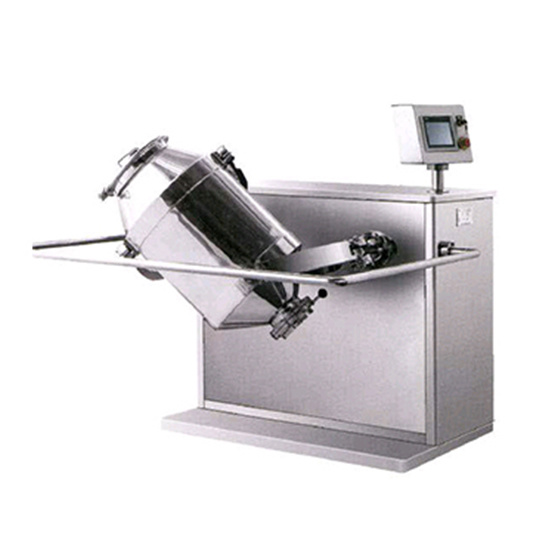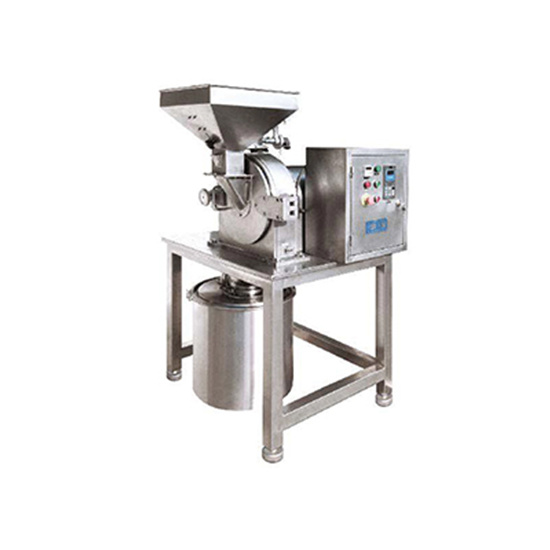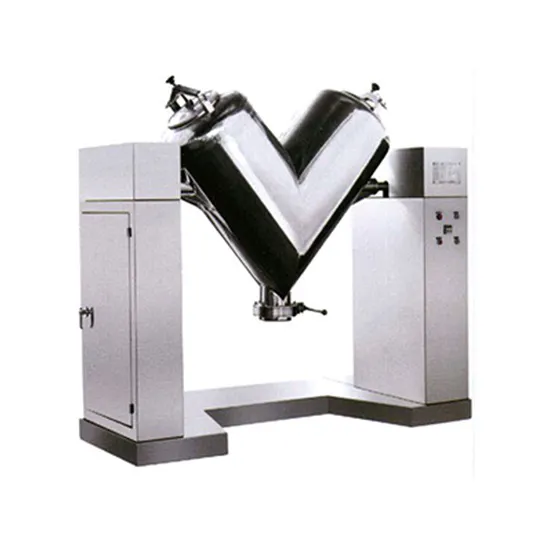NEWS
The Environmental Impact of Using Swing Granulation Systems: A Comprehensive Analysis
Jun 14,2025
The Environmental Impact of Using Swing Granulation Systems
Table of Contents
- 1. Introduction to Swing Granulation Systems
- 2. What is Swing Granulation?
- 3. Mechanism of Action of Swing Granulation Systems
- 4. Environmental Impacts of Swing Granulation Systems
- 5. Benefits of Swing Granulation Systems in Reducing Environmental Harm
- 6. Sustainability Practices in Swing Granulation
- 7. Case Studies: Real-World Applications
- 8. Future Implications and Innovations
- 9. Frequently Asked Questions
- 10. Conclusion
1. Introduction to Swing Granulation Systems
In the ever-evolving landscape of industrial equipment, **swing granulation systems** have emerged as a pivotal technology for manufacturing processes, particularly in the pharmaceutical and food industries. These systems are designed to create uniform granules from fine powders, enhancing product consistency while improving operational efficiency. However, this article focuses on the **environmental impact** of swing granulation systems, aiming to provide insights into their roles in sustainable manufacturing practices.
2. What is Swing Granulation?
Swing granulation is a process that involves the agglomeration of powders into granules using a combination of mechanical and liquid binding methods. The unique feature of swing granulators is their ability to operate in a 3D motion, allowing for even distribution of the binding agents. This results in more homogeneous granules compared to traditional granulation methods.
2.1 Key Components of Swing Granulation Systems
The primary components of swing granulation systems include:
- **Granulation Chamber**: Where the agglomeration occurs.
- **Mixing Blades**: These blades facilitate the mixing of powders and binders.
- **Control Systems**: Used to regulate the process parameters such as temperature and speed.
3. Mechanism of Action of Swing Granulation Systems
The functioning of swing granulation systems relies heavily on their mechanical design, which allows for a swinging motion that promotes effective mixing and granulation. As the mixing blades rotate, they lift and drop the powder, ensuring thorough interaction with the binding agents.
3.1 Phases of the Granulation Process
The granulation process can be broken down into several phases:
- **Nucleation**: Initial formation of granules when particles collide and adhere.
- **Growth**: Granules grow larger as more particles adhere.
- **Spheronization**: Final shaping of granules into a uniform size and shape.
4. Environmental Impacts of Swing Granulation Systems
Swing granulation systems have several environmental implications, both positive and negative.
4.1 Reduced Energy Consumption
One of the significant benefits of swing granulation systems is their energy efficiency. These systems often require less energy compared to traditional granulation methods, leading to lower greenhouse gas emissions.
4.2 Minimization of Waste
The design of swing granulators helps in minimizing waste generation. The efficient conversion of raw materials into granules reduces the amount of unprocessed powder that would typically end up as waste.
5. Benefits of Swing Granulation Systems in Reducing Environmental Harm
Swing granulation systems provide numerous benefits that contribute to reducing their environmental impact.
5.1 Enhanced Product Quality
By producing uniform granules, swing granulators improve the quality of the final product, which can lead to lower rejection rates and less waste.
5.2 Improved Resource Utilization
The efficient use of raw materials means that fewer resources are required to produce the same amount of product, contributing to sustainability.
6. Sustainability Practices in Swing Granulation
To maximize the environmental benefits of swing granulation systems, several sustainability practices can be implemented.
6.1 Using Eco-Friendly Raw Materials
Opting for sustainable and biodegradable binders can further enhance the eco-friendliness of the granulation process.
6.2 Implementing Closed-Loop Water Systems
Utilizing closed-loop systems can help minimize water waste during the granulation process, contributing to better water conservation efforts.
7. Case Studies: Real-World Applications
Understanding the real-world applications of swing granulation systems illuminates their environmental benefits.
7.1 Pharmaceutical Industry
In the pharmaceutical sector, companies have adopted swing granulation systems to reduce the environmental footprint of their production processes. By minimizing waste and energy consumption, these companies are not only compliant with regulations but also enhancing their brand image as environmentally responsible entities.
7.2 Food Industry
In the food industry, swing granulators have been used to create consistent granules for various products, leading to reduced ingredient waste and improved quality.
8. Future Implications and Innovations
As technology continues to evolve, swing granulation systems are likely to integrate more advanced features that enhance their sustainability.
8.1 Smart Technologies
The integration of IoT and smart technologies can lead to real-time monitoring and optimization of the granulation process, further reducing energy consumption and waste.
8.2 Research and Development
Ongoing research into more sustainable materials and processes will likely lead to innovations that can further reduce the environmental impact of swing granulation systems.
9. Frequently Asked Questions
9.1 What are the main advantages of swing granulation systems?
Swing granulation systems offer advantages such as reduced energy consumption, minimized waste, and enhanced product quality.
9.2 How do swing granulators differ from traditional granulation methods?
Swing granulators utilize a unique swinging motion that promotes better mixing and granulation compared to traditional methods, which may rely solely on static mixing.
9.3 Can swing granulation systems be used in the production of eco-friendly products?
Yes, these systems can accommodate eco-friendly materials and binders, making them suitable for the production of sustainable products.
9.4 What industries benefit most from swing granulation systems?
The pharmaceutical and food industries are two primary sectors that benefit significantly from the implementation of swing granulation technologies.
9.5 What future developments can we expect in swing granulation technology?
Future developments may include the incorporation of smart technologies for process optimization and research into sustainable materials to further enhance their environmental benefits.
10. Conclusion
Swing granulation systems represent a significant advancement in industrial manufacturing, offering efficient and sustainable solutions for producing uniform granules. The environmental impact of these systems is multifaceted, providing opportunities for reduced energy consumption, minimized waste, and improved resource utilization. As industries continue to prioritize sustainability, the role of swing granulation systems will likely become increasingly important in fostering eco-friendly manufacturing practices. Embracing these technologies not only aligns with global sustainability goals but also enhances the overall efficiency and quality of industrial processes.
More News










